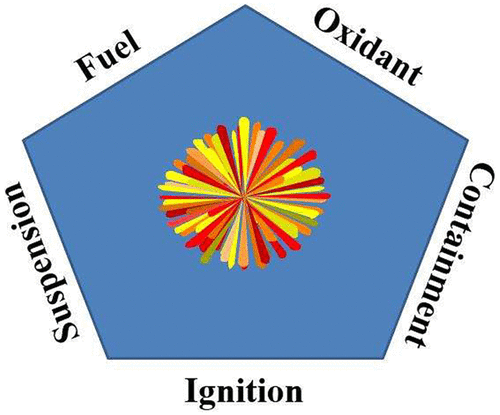当前位置:
X-MOL 学术
›
Ind. Eng. Chem. Res.
›
论文详情
Our official English website, www.x-mol.net, welcomes your feedback! (Note: you will need to create a separate account there.)
Metal Dust Explosion Hazards: A Technical Review
Industrial & Engineering Chemistry Research ( IF 4.2 ) Pub Date : 2018-08-20 , DOI: 10.1021/acs.iecr.8b02465 Nicholas S. Reding 1 , Mark B. Shiflett 1
Industrial & Engineering Chemistry Research ( IF 4.2 ) Pub Date : 2018-08-20 , DOI: 10.1021/acs.iecr.8b02465 Nicholas S. Reding 1 , Mark B. Shiflett 1
Affiliation

|
Metal dust deflagrations continue to pose a critical threat toward safety in the metal processing industry. This paper begins with introduction of the fundamental requirements for an explosion and reviews the modern developments in explosion prevention techniques, while describing the challenges confronted with applying these techniques to nonstandard metal dust applications. Variability in several intrinsic properties associated with bulk solids conveyance (such as propagation behavior, degree of turbulence, particle size, and moisture content) contributes to metallic fuels having the increased potential to act as highly reactive explosion hazards. Upon ignition in a contained enclosure volume and propagation to interconnected vessels, metal dusts exhibit augmented explosion severity and sensitivity because of their large heats of combustion, higher burning temperatures, radiative heat transfer effects, and abnormally reactive interactions with water. These characteristics are specific to metal dust fuels and are not commonly demonstrated in organic combustion.
中文翻译:

金属粉尘爆炸危险:技术评论
金属粉尘爆燃继续对金属加工行业的安全构成严重威胁。本文首先介绍了爆炸的基本要求,并回顾了防爆技术的现代发展,同时描述了将这些技术应用于非标准金属粉尘应用所面临的挑战。与散装固体运输相关的几种内在特性(例如,传播行为,湍流程度,粒度和水分含量)的可变性导致金属燃料具有更高的潜力,具有充当高反应性爆炸危险的潜力。在封闭空间内点燃并传播到相互连接的容器后,金属粉尘由于燃烧热量大而表现出更高的爆炸强度和灵敏度。更高的燃烧温度,辐射热传递效应以及与水的异常反应性相互作用。这些特性是金属粉尘燃料所特有的,在有机燃烧中并不常见。
更新日期:2018-08-20
中文翻译:

金属粉尘爆炸危险:技术评论
金属粉尘爆燃继续对金属加工行业的安全构成严重威胁。本文首先介绍了爆炸的基本要求,并回顾了防爆技术的现代发展,同时描述了将这些技术应用于非标准金属粉尘应用所面临的挑战。与散装固体运输相关的几种内在特性(例如,传播行为,湍流程度,粒度和水分含量)的可变性导致金属燃料具有更高的潜力,具有充当高反应性爆炸危险的潜力。在封闭空间内点燃并传播到相互连接的容器后,金属粉尘由于燃烧热量大而表现出更高的爆炸强度和灵敏度。更高的燃烧温度,辐射热传递效应以及与水的异常反应性相互作用。这些特性是金属粉尘燃料所特有的,在有机燃烧中并不常见。



























 京公网安备 11010802027423号
京公网安备 11010802027423号